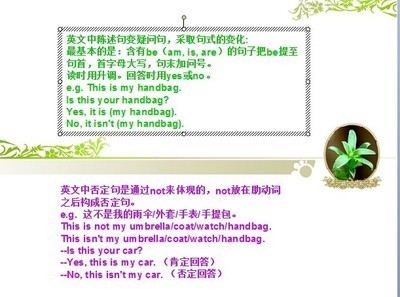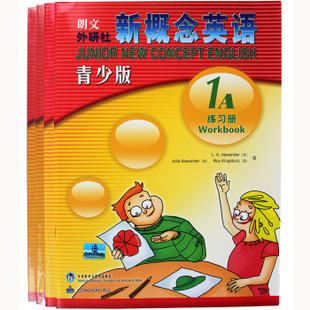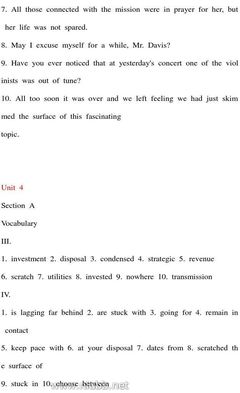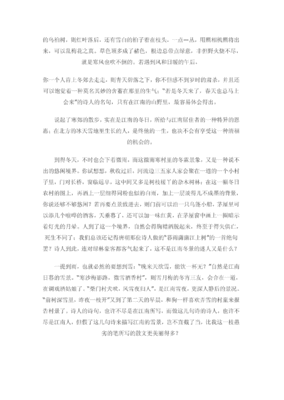第一:Warming-up
1、sing asong
2、“今天给大家分享一个小故事,看哪位同学能明白其中的意思。认真听哦!let’s beginnow.”
故事:Yesterday morning, I went to work asusual.〔教师大步向前走〕做出去上班的样子〕 Suddenly, I met a crowd of people.〔好奇〕I felt very curious, I wanted to knowwhat had happened. So I ran to the people and said: “ Excuse me ,excuse me! Let me in, this is my sister.〔拨开人群〕 When I rushed into the crowds, oh, my god!〔惊讶〕 --- A dead dog lied down on theground. 〔不知所措〕
第二:Ask andanswer
课堂过渡: “OK!我们一起回顾一下,刚刚那个女孩想冲进人群的时候是如何表达的呢?〔提问〕
Ss:“ Excuseme” T:yes!那么今天我们会在一起学习的内容就和“Excuseme” 有关。Now, open your books!And there are 4 pictures. I will ask you somequestions:
1、How manypeople are there in the pictures? A:two people, a man and a woman[在老师的引导下进行回答]
2、Why doesthe man call the woman?A:The woman’s handbag is lost.
3、Whosehandbag is it?A:the woman’s handbag.
那么现在我们一起来看看:what happened to the man and the woman?他们之间究竟发生了什么事情呢?“
[通过问题让学生了解课文的基本内容;提出问题,引发一起寻找答案的兴趣。]
S1: Excuseme!
ⅰ跟读并注意发音,浊化/gju/.
T:“the manwants talk to the woman. What does he say?”
Ss:“Excuseme”!
※这里同样用了“Excuse me”!现在总结一下,我们已经知道两种情况可以用到“Excuse me”!
场景一:Excuse me, sir, will you tell me the way to Onlyschool?劳驾,你可以告诉我去昂立的路吗?
第一种用法 向不熟悉的人打听情况或提出请求(其实质用法是引人注意),意为:请问;劳驾;对不起。
Activity1
T 问一位学生:excuse me, may I know your name?接着,回答的那名学生接着问下一名同学,不断重复excuseme!
场景二:I got a bus, there are lots of people, “ this stopis only road, get off please!”(昂立路到了,请下车) at that time I will say:Excuse me!
第二种用法 用作从别人面前经过时的礼貌用语,意为:劳驾;对不起。
※今天再给大家介绍两种环境下,为了表示礼貌,我们也要说:“Excuse me!“
Activity2
第一排的同学站起来穿过第二排的同学,并说:excuseme! 然后进行交换。每一位学生参与活动。
场景三:If you are late. What will you say? “Excuse me, mayI come in?”(教师敲桌子)
第三种用法表示事先对自己不礼貌的行为道歉,意为:对不起。
Activity3
老师敲桌子,做敲门状。只要听到“敲门”声音,学生一起说:“Excuse me! “速度的快慢由老师自己掌握,为了让班级的气氛越来越高涨,可以在保证语音的基础上加快速度。
场景四:老师做出感冒的的样子,打一个喷嚏,“Excuse me! “
第四种用法 打喷嚏时说"Excuseme“别人要说:god bless you!
Activity4
T 做打喷嚏状,并说:“Excuse me! “。Ss一起做打喷嚏状,并重复:“Excuse me!
课堂过渡:“那么现在我们已经学习了excuse me的用法了,当别人说:excuse me,我们要如何回答呢? |
S2: Yes?
图标解释 there is a question mark, 所以“yes”要用升调。
借用body-language. 当老师说:excuse me?学生们一起回答:yes?反复练习。然后走到一位学生身边: excuse me?学生回答:yes?
Activity5
教师和学生之间的互动,教师手势,学生来说Yes?教师突然手势下降,学生说Yes.
课堂过渡:T 拿着一位学生的书或其他文具问:excuse me. S:yes? T: Is this your book? S: YES!T指着自己的鼻子:Is this your nose ? S:YES! T: YES? --- T可以多举一些例子,一方面,操练“yes”的用法,另一方面引出:Is this your handbag? T:Why dose the man call the woman? He picks up ahandbag. So he said to the woman: Is this yourhandbag?
S3: Is this your handbag?
1] This 咬舌音
T 问一名同学:Isthis your book? Yes! This ismybook.
2] 区别this& that [近指和远指]
T 指着离自己很近的一书本: This is my book. [逻辑重音:This] 然后T很cool地把书扔地很远同时指着那本书:That is my book. [逻辑重音:That]
Activity6
Fast reaction: when T point to a thing nearby, Ssshould say: “this”, if T point to a thing far from him, Ss shouldsay:“that(教师要很夸张自己的动作,这样才能达到很好的效果,近指和远指要有明显的区别。)
Activity7
T getsmany things together from Ss. And pick up one of them, ask astudent: Is this your knife? S: yes, it is./ no,it isn’t.
课堂过渡: T ask a student: Is this your pencil? S: yes! T:Pardon? S:yes! [loudly]
T:what’s your name? S: --- T: Pardon? S: --- [loudly]
practise again andagian.
S4:Pardon?
Practice2: Ss ask the T : What’s your name? T: yia. Ss: pardon? T: yia. Ss:pardon?
场景:Do you know who will invite me have a dinnertonight? Jay Chou. “Pardon?”
课堂过渡:T拿一本书走到一位学生处:Is this your book? S: pardon? T [Loudly] S:yes. 那么我们如何做出肯定的回答呢? Yes, it is.
S5: Yes, it is.
Activity9 T point at his nose or other bodypart and asksome questions like these: Is this your nose? Is that your mouth?And so on. Practice : “yes, itis”.
课堂过渡:女士已经确定男士捡到的包包是她的,那么对于别人的帮助,我们如何表达感谢呢?
Thank you very much.
S6: Thank you very much
那么除了这种表达方式,还可以如何表达呢?Otherusage: Thank you thanks many thanks don’tmention it I really appreciate of you thanks a lotno problemmypleasurenever mind
第四项 语法讲解
第五项 做练习
第六项 布置家庭作业

 爱华网
爱华网



